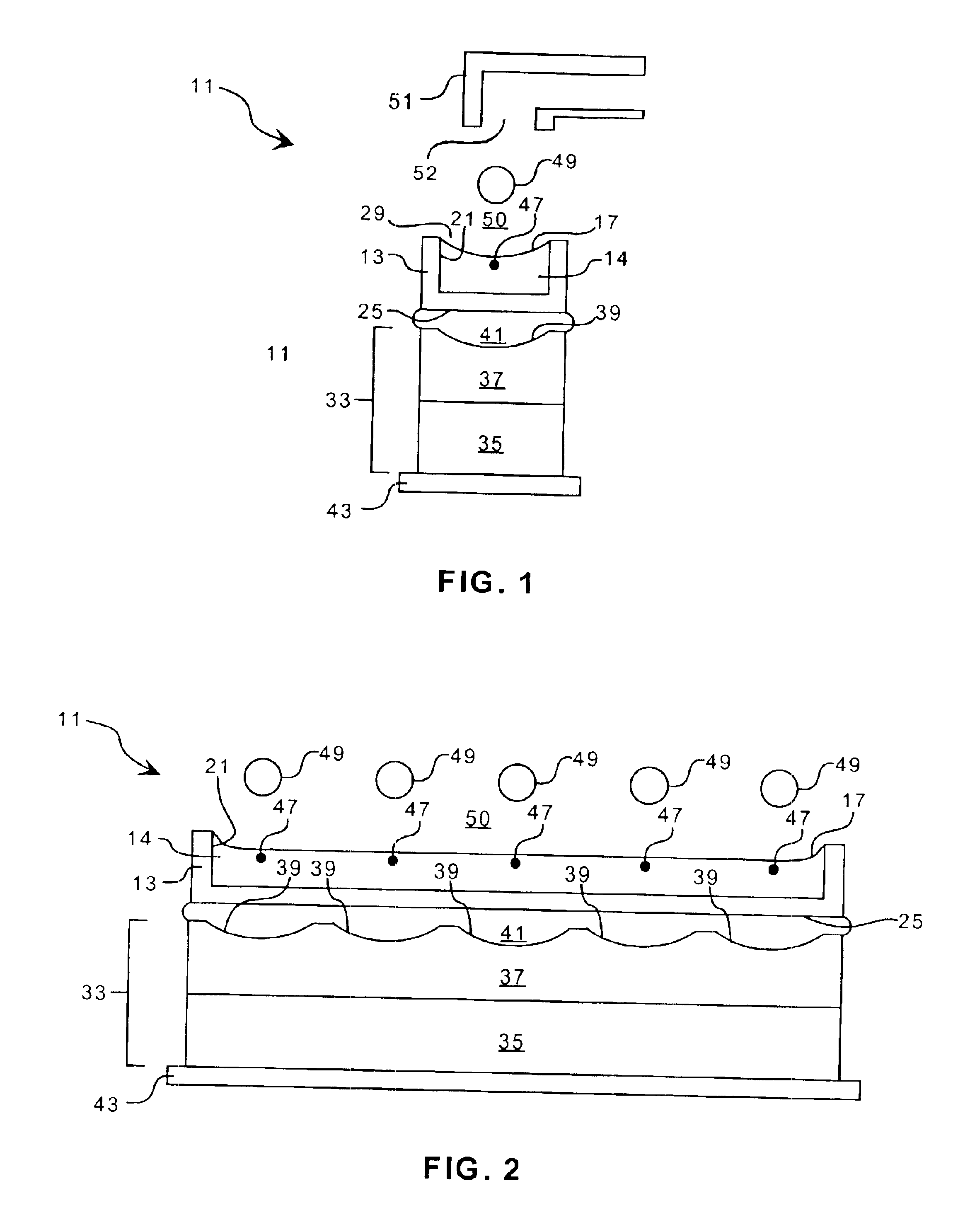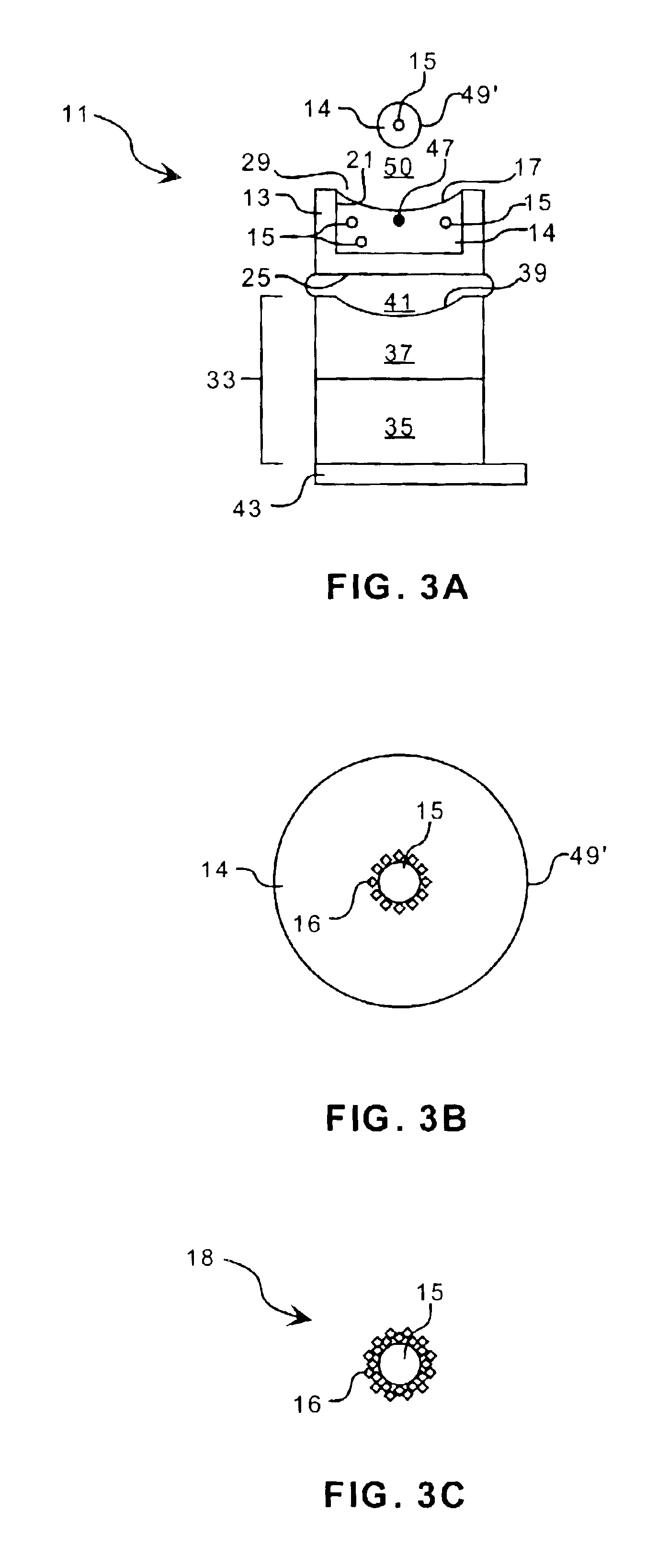Precipitation of solid particles from droplets formed using focused acoustic energy
a focused acoustic energy and solid particle technology, applied in the direction of mechanical vibration separation, packaging foodstuffs, packaged goods, etc., can solve the problems of wide variation in particle size produced by such techniques, potential contamination, and damage to proteins and other therapeutic biomolecules
- Summary
- Abstract
- Description
- Claims
- Application Information
AI Technical Summary
Benefits of technology
Problems solved by technology
Method used
Image
Examples
example 1
This example demonstrates the use of focused acoustic ejection technology in generating a particle from a droplet of immiscible fluids. A reservoir is provided containing two layers of immiscible fluid. The upper layer contains a coating fluid comprised of a natural phospholipid such as sphingomyelin, phosphatidylethanolamine, or phosphatidylcholine, and the lower layer contains an aqueous solution of a therapeutic agent near its solubility limit. Focused acoustic energy having a wavelength comparable to the desired particle size is directed to a focal point near the interface between the upper and lower layers. As a result, a droplet of the aqueous solution coated with the coating fluid is ejected. The droplet is then rapidly cooled to 5° C. to force a rapid nucleation at multiple locations within the droplet and subsequent crystallization of the therapeutic agent. Optionally, at least a portion of the solvent is removed from the particle interior to complete crystallization. Such ...
example 2
Focused acoustic ejection technology is used in the manner described in Example 1, except that the upper layer contains a synthetic coating fluid comprised of a monomer or a monomer / polymer blend (e.g., methyl methacrylate or methyl methacrylate / polymethyl methacrylate blend) and photoinitiator. Once the droplet has been rapidly cooled to 5° C. to force a rapid nucleation at multiple locations within the droplet, the droplet is exposed to light of an appropriate wavelength. As a result, the therapeutic agent is crystallized within a poly(methyl methacrylate) shell. As a result, a more rigid overall particle structure is formed. The particle is then stored in a dry gas environment to remove any internal solvent.
example 3
This example demonstrates the use of focused acoustic ejection technology in generating a particle useful for the behavior of two-dimensional protein crystallization the surfaces of giant lipid bilayer vesicles. Such vesicles are described in Menger et al. (1998), “Chemistry and Physics of Giant Vesicles as Biomembrane Models,”Curr. Opin. Chem. Biol., 2: 726-732, in Korlach et al. (1999), “Characterization of Lipid Bilayer Phases by Confocal Microscopy and Fluorescence Correlation Spectroscopy,”PNAS USA 96:8461-8466, and in Dietrich et. al. (2001), “Lipid Rafts Reconstituted in Model Membranes,”Biophysical J. 60:1417-1428. Focused acoustic ejection technology is used in the manner described in Example 1, except that the upper layer contains a lipid and the lower fluid is comprised of an aqueous solution of a compound such as streptavidin that is both hydrophobic and hydrophilic. Focused acoustic energy is directed to a focal point near the interface between the upper and lower layer...
PUM
| Property | Measurement | Unit |
|---|---|---|
| Fraction | aaaaa | aaaaa |
| Fraction | aaaaa | aaaaa |
| Thickness | aaaaa | aaaaa |
Abstract
Description
Claims
Application Information
 Login to View More
Login to View More - R&D
- Intellectual Property
- Life Sciences
- Materials
- Tech Scout
- Unparalleled Data Quality
- Higher Quality Content
- 60% Fewer Hallucinations
Browse by: Latest US Patents, China's latest patents, Technical Efficacy Thesaurus, Application Domain, Technology Topic, Popular Technical Reports.
© 2025 PatSnap. All rights reserved.Legal|Privacy policy|Modern Slavery Act Transparency Statement|Sitemap|About US| Contact US: help@patsnap.com



